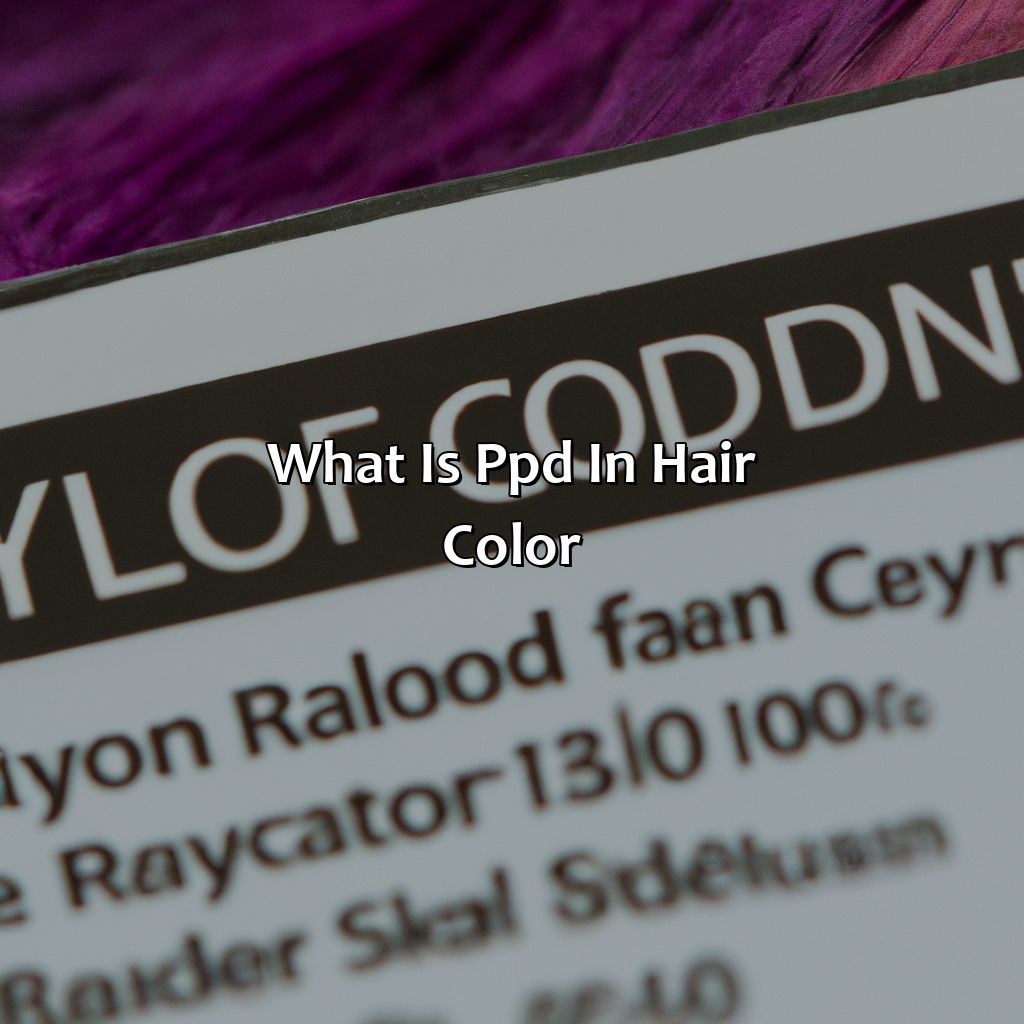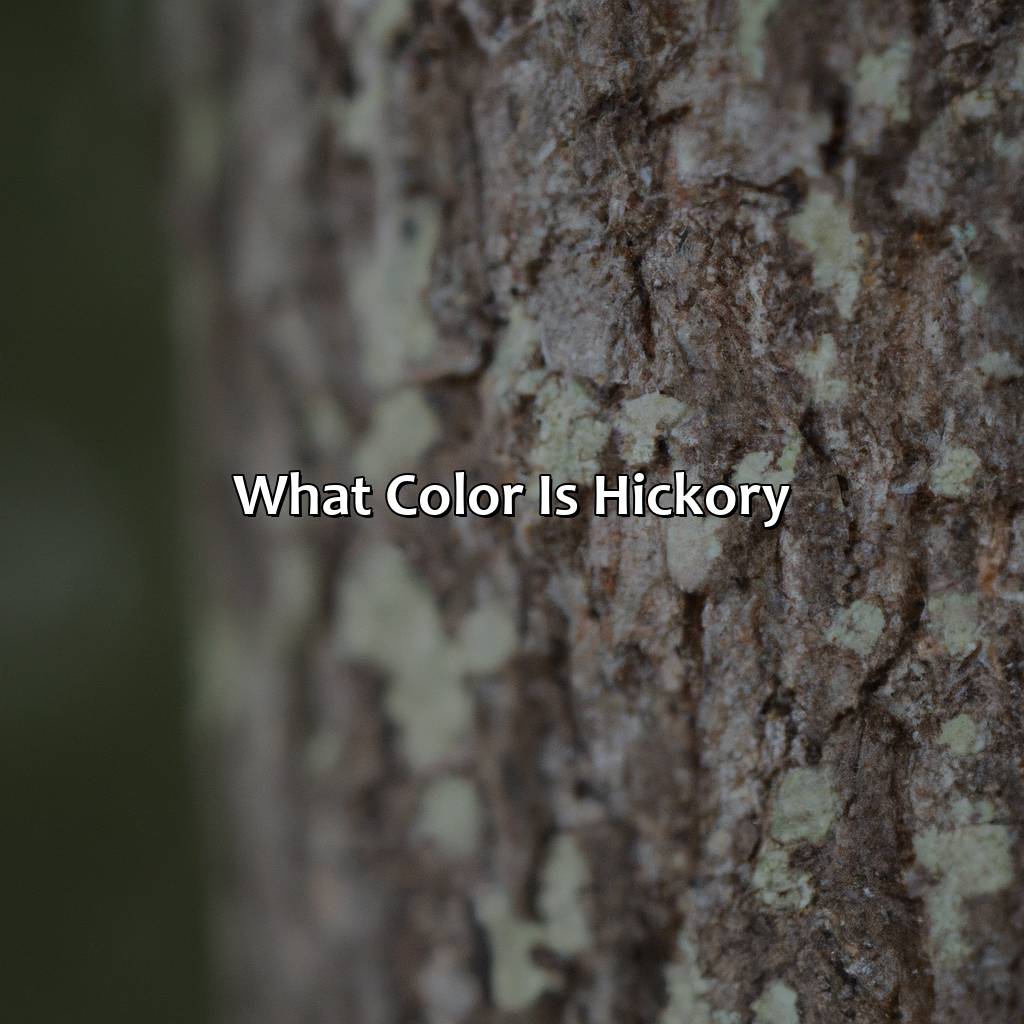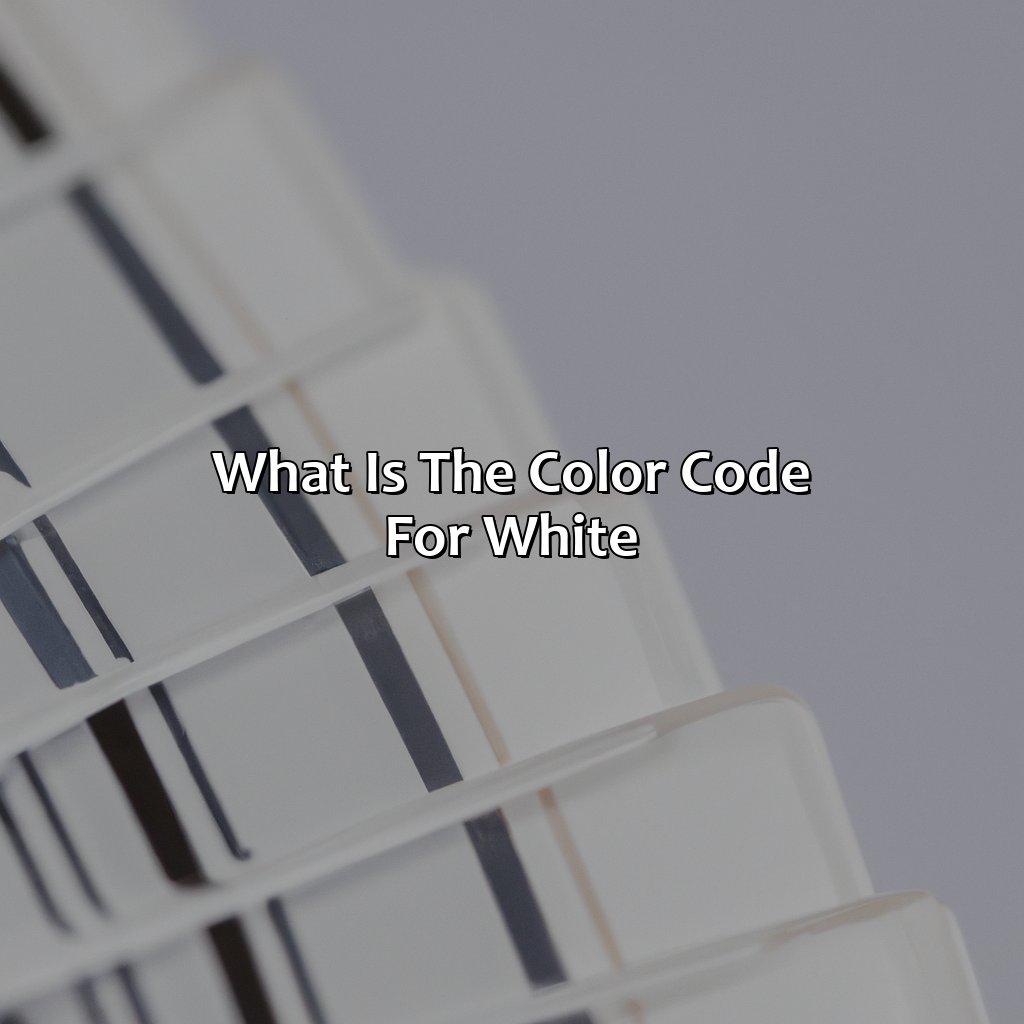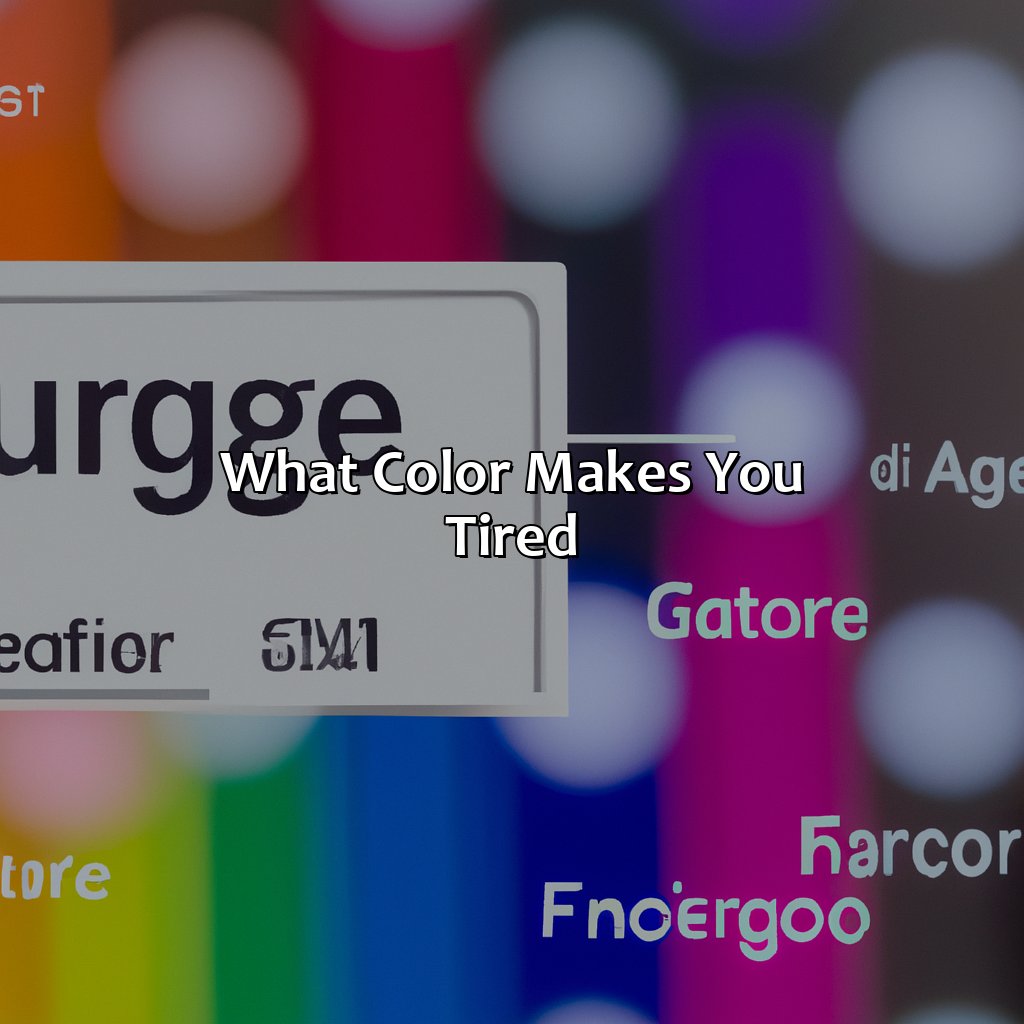Key Takeaway:
- PPD or P-Phenylenediamine, is a chemical commonly used in hair color for its coloring properties.
- PPD’s chemical structure enables it to penetrate the hair shaft and produce long-lasting color. However, it can also lead to skin allergies and other side effects, such as itching, redness, and swelling.
- Consumers can opt for PPD-free hair color products, natural hair color options, and consult with a professional before using any hair color product that contains PPD.
The Chemistry of PPD in Hair Color
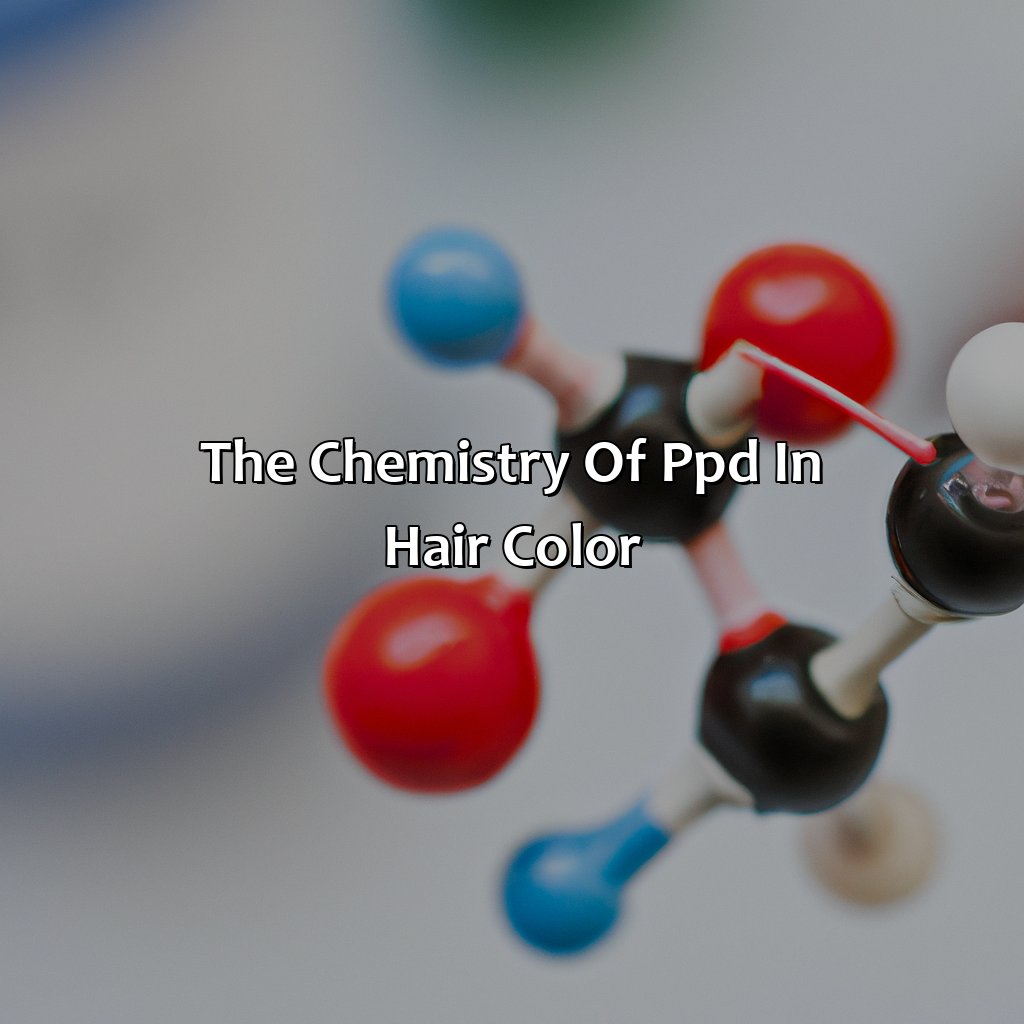
Photo Credits: colorscombo.com by Stephen Brown
- We are diving into the chemistry of PPD in hair color.
- Firstly, let’s define PPD and understand its role in hair coloring.
- Next, we’ll learn how PPD affects the coloring of hair.
- Last, we’ll figure out the chemical structure of PPD and how it impacts hair.
Definition of PPD
PPD, or paraphenylenediamine, is a chemical compound commonly used in hair color products to create shades of brown, black and red. It is categorized as a permanent dye due to its ability to penetrate the hair cuticle and bond with the melanin pigment. PPD is often mixed with other chemicals like hydrogen peroxide and ammonia to create a desired shade.
The use of PPD in hair color products has been controversial because it can cause severe allergic reactions. The FDA has set limitations on PPD concentration levels in hair color products due to safety concerns.
PPD has a distinct chemical structure that interacts with proteins in the hair shaft. The compound comprises two aromatic amine groups connected by a para position on a benzene ring. This structure allows PPD to easily penetrate the outer layer of the hair strand and react with melanin pigments present in the cortex.
Individuals with sensitivity or allergy to PPD can experience symptoms such as itching, swelling, redness, rashes, and blisters upon using products containing this chemical compound. Other side effects include stinging sensation and skin irritation that may appear several hours after application.
Consumers concerned about potential adverse reactions from PPD may opt for natural alternatives such as henna or plant-based dyes. However, these options do not provide long-lasting color results like traditional synthetic dyes containing PPD.
Professional hairstylists are advised to take precautionary measures while using products containing PPD. This includes conducting patch tests prior to application and wearing protective gloves during use.
Pro Tip: Always consult a dermatologist if you suspect an allergy or sensitivity towards PPD before trying any hair color product containing this compound.
PPD’s role in hair coloring is to create a permanent color change…and possibly an allergic reaction.
PPD’s Role in Hair Coloring
PPD, or p-Phenylenediamine, plays a crucial role in hair color by being an active ingredient in most permanent and semi-permanent dyes. Its primary function is to create a long-lasting and vibrant dye by producing oxidative reactions between the dye molecules and the melanin in hair shafts.
The following table shows PPD’s Role and Function:
| Role | Function |
| Additive | To enhance the color and longevity of dye molecules on hair shafts. |
| Catalyst | To speed up or promote oxidation reactions that produce new pigment colors on hair strands. |
Additionally, PPD works by diffusing into the hair shafts’ cuticles, which makes it difficult for the color to come off quickly. Moreover, its chemical structure allows it to penetrate deeply into the cortex of hair strands, leading to a more intense and vivid color outcome.
It is essential to note that while PPD is an effective tool in coloring processes, it can cause allergic reactions ranging from mild irritation to severe respiratory failure in some individuals. This underscores why alternatives should be explored.
Pro Tip: It is advisable first to patch-test before trying out new products containing PPD or other chemicals as they might expose one’s skin or health to health risks when used improperly.
Get ready to delve into the dark side of PPD’s chemical makeup and its effects on hair.
Chemical Structure of PPD
PPD is a popular hair coloring agent that imparts vivid colors to hair, and its chemical makeup plays a crucial role in achieving the desired results. PPD is scientifically known as paraphenylenediamine and belongs to the aromatic diamine family. Its chemical structure consists of two amino groups (-NH2) joined together by a benzene ring. The benzene ring has two additional carbon atoms which help form bonds with other molecules, giving PPD its versatile property.
| Chemical Structure | |
|---|---|
| Chemical Name | Paraphenylenediamine |
| Chemical Formula | C6H8N2 |
| Molecular Weight | 108.14 g/mol |
| CAS Number | 106-50-3 |
The structure of PPD plays a critical role in imparting color to hair, primarily because it harbors reactive sites that interact with oxygen molecules when mixed with an oxidizing agent such as hydrogen peroxide. This process generates the melanin granules that add colors to the hair shaft surface and ultimately leads to long-lasting hair color.
It’s important to note that while PPD can be effective in achieving vibrant hair color, it poses several side effects on human health, particularly skin irritation or allergic reactions that can lead to rashes, itching, redness, or swelling. Thus many individuals opt for natural alternatives or choose PPD-free products when coloring their hair.
Several studies over time have demonstrated the potential harm of using PPD without proper caution or care. For example, as per sources from Environmental Working Group (EWG), several brands of hair dye containing PPD might contain impurities such as carcinogenic substances which may negatively impact multi-organ systems and overall health.
In summary, understanding and acknowledging the chemical structure of PPD used in various hair coloring agents are critical for ensuring healthy use without adverse side effects while achieving unique and vibrant hair color results. Don’t gamble with your hair color – PPD in hair color can cause severe allergic reactions and other side effects.
Side Effects of PPD in Hair Color

Photo Credits: colorscombo.com by Joseph Robinson
Understanding the side effects of PPD in hair color is important. Here, we’ll discuss the allergic reactions it can cause. Symptoms and severity will be covered. Lastly, we’ll look at other potential side effects from the chemicals in hair color.
Allergic Reactions
Individuals may experience allergic reactions to PPD present in hair color. In some cases, these reactions can be severe and require medical attention. Symptoms of allergic reactions include itching, redness, swelling and blisters on the scalp, face and neck. In rare cases, breathing difficulties and anaphylaxis may occur. Testing for PPD allergy before hair color application is recommended to prevent such symptoms. Protective measures like gloves and masks are also useful for salon professionals and clients with PPD allergies.
PPD allergies can lead to more than just a bad hair day, with severe reactions ranging from rashes to difficulty breathing.
Severity of Allergic Reactions
Allergic reactions to PPD in hair color can range from mild to severe, depending on the individual’s sensitivity level. The severity of these reactions may vary, causing discomfort and inconvenience for those who experience them. Although rare, severe allergic reactions can be life-threatening.
In some cases, individuals may only experience a mild reaction with redness or itching on the scalp or skin surrounding the hairline. However, others may develop a severe reaction like anaphylaxis, leading to difficulty breathing, rapid heartbeat, and a drop in blood pressure. It is important to seek medical attention immediately if any severe symptoms occur.
Moreover, repeated exposure to PPD in hair color could cause damage to the hair follicle and lead to underlying diseases such as asthma or dermatitis. As preventive measures are not fully protective against unexpected reactions caused by prolonged exposure to ppd chemical in various products.
Pro Tip: If you have experienced a previous allergic reaction or are uncertain about your sensitivity towards PPD in hair color products before application contact your physician and proceed with patch tests recommended by the manufactures before using any hair care products with PPD ingredient in it.
Who knew a little hair color could pack such a punch?
Say hello to the not-so-friendly side effects of PPD and chemical-laden hair dyes.
Other Side Effects
PPD has been known to cause several side effects in hair color. It affects not just the people who have allergic reactions to it, but also those who do not. When PPD comes into contact with skin, it can cause irritation, burning, and redness of the eyes and scalp. Additionally, long-term use of hair color products containing PPD can lead to hair damage and brittleness.
The use of chemicals in hair color products has seen a rise in complaints regarding allergies and other negative reactions. These products contain ingredients with high chemical compositions that can harm the skin or health. Side effects associated with PPD include inflammation, itching, blisters, rashes on the scalp or face, swollen eyelids and circulatory problems.
For individuals who experience allergic reactions from PPD use in hair color, they could experience anaphylaxis which includes difficulty breathing, wheezing and loss of consciousness leading to potentially fatal consequences if untreated.
To avoid experiencing any side effect when using hair color products containing PPD, one should consider opting for natural alternatives without harsh chemicals such as Henna or Indigo dyes or try more improved versions of alternative Permanent Hair Dye brands available in the market today that do not contain substances harmful to human health.
It is necessary for professionals to implement safety measures during application of PPD-based hair colors by conducting patch testing before application, using protective clothing like gloves on reaching out to local salon services near you without risking anything.
Don’t want PPD in your hair color? No problem, there are plenty of alternatives available!
Alternatives to PPD in Hair Color

Photo Credits: colorscombo.com by Anthony Anderson
Don’t look any further for alternatives to PPD in hair color products. Choose from natural, safer options instead! There is a wide selection of natural hair color options available. Plus, there are PPD-free hair color products on the market too. Ditch the harmful chemical and opt for a more natural option.
Natural Hair Color Options
There are alternatives to chemical-laden hair dyes that contain PPD. These natural hair color options do not contain any harmful chemicals, making them an ideal choice for individuals who wish to avoid exposure to synthetic ingredients.
- Herbal Hair Color: Made from pure plant-based ingredients and herbs, this type of hair dye offers a natural alternative to traditional hair colors. It can be created using henna, indigo, or cassia, depending on the desired color.
- Coffee and Tea: Coffee and tea can be used as natural dyes for brunettes and redheads. Simply brew a strong pot of coffee or tea and pour it over wet hair, leaving it in for at least an hour before rinsing.
- Lemon Juice: Lemon juice can be used to lighten blonde hair naturally. Simply apply lemon juice to damp hair and let it sit for 30 minutes before rinsing it out.
- Beet Juice: Beet juice can be used to temporarily stain hair pink or red. Mix beet juice with some coconut oil and apply to damp hair for a few hours before rinsing
- Hair Mascara or Powder: These temporary natural options include mascara wands or powder brushes that add quick flashes of bright color without damaging the strands
It is important to note that while these natural options may not contain PPD or other harmful chemicals, they may still cause reactions in individuals with sensitive skin. Additionally, results may vary depending on individual factors such as initial hair color and texture.
Notably, ancient civilizations such as the Egyptians used plant-based dyes like Henna centuries ago as part of their beauty regimen too.
Finally, a way to avoid allergic reactions and still look fabulous – PPD-free hair color products have got your back.
PPD-Free Hair Color Products
With an increasing number of people experiencing allergic reactions to PPD in hair color, the demand for PPD-free hair color products has been on the rise. These products are made with alternative hair dyes that do not contain PPD to ensure a safe and effective coloring experience. Not only does this offer a safer solution for individuals who suffer from allergies, but it also caters to those who wish to avoid chemical-based products.
PPD-free hair color products come in various forms such as semi-permanent, permanent, and temporary hair dye solutions. These include henna-based dyes, plant-based dyes, and vegetable-based dyes. As these ingredients are naturally derived, they may require more frequent reapplication compared to traditional hair color solutions.
Moreover, many brands have developed alternative formulas using ingredients like para-toluene diamine sulfate (PTDS) and para-aminobenzoic acid (PABA) as an alternative to PPD. However, it is important to note that these alternatives may still cause reactions in some individuals with severe allergies.
Pro Tip: Before purchasing PPD-free hair color products, read the ingredient list carefully and perform a patch test before application to ensure there are no allergic reactions. If safety is your priority, take measures to prevent PPD reactions when using hair color products.
Safety Measures for PPD Use in Hair Color

Photo Credits: colorscombo.com by Jordan Jones
Safety is a must when using PPD in hair color. Patch testing is a must to check for allergic reactions. Both salon professionals and clients should take protective measures. People with an allergy to PPD should take extra precautions.
Patch Testing
It is vital to perform patch testing on the scalp and skin prior to using hair color products. Patch testing is a critical procedure that helps determine if an individual has a sensitivity or allergy to PPD. By taking this precautionary measure, it can prevent severe allergic reactions that cause discomfort, swelling, rashes, and in rare cases, breathing difficulties.
Patch testing involves applying a small amount of the hair color product to the skin on the inside of the elbow or behind the ear. The exposed area is then monitored for 48 hours for any signs of irritation or reaction. If redness, swelling or itchiness occurs at that site, it indicates that the person has sensitivity towards PPD and may experience an allergic reaction during hair coloring.
It is essential that individuals undergo patch testing even if they’ve used hair dye products before. Sensitivity may develop over time due to various factors like health conditions or changes in medication usage.
Salon professionals must educate clients on the importance of patch testing and insist it is done beforehand with every color application. It would be best if you also refrain from coloring your hair if you have undergone patch testing in the past but have not colored your hair in several months.
Patch testing is a crucial safety measure that should never be skipped or taken lightly when using PPD-containing hair color products. Protect your hair and your health with these essential protective measures for salon professionals and clients when using PPD in hair color.
Protective Measures for Salon Professionals and Clients
To ensure the safety of salon professionals and clients during hair coloring that involves PPD, protective measures must be put into place. These measures help to minimize exposure and prevent reactions to PPD.
- Salon Professionals should wear disposable gloves and protective clothing when handling or applying PPD-containing products.
- Clients should avoid getting PPD-based hair color on their skin or scalp by wearing a protective gown or towel. The salon professional can also apply a barrier cream around the hairline and ears to protect the skin.
- Adequate ventilation in the salon can help reduce the amount of PPD fumes that both professionals and clients inhale during application.
It’s essential to remember that every client is different, so factors like allergies, immune system responses, individual differences, current health conditions, medications being taken, and past experiences with hair color should be considered before application.
Pro Tip: Conduct regular training sessions focusing on protecting salon professionals from hazardous chemicals present in beauty products that they work with daily.
Don’t let an allergy to PPD turn your hair color experience into a horror movie: take precautions and stay safe.
Precautions for Individuals with PPD Allergies
Individuals who are allergic to PPD need to take several precautions while using hair color products containing PPD. It is crucial to protect themselves from potential side effects that can occur due to an allergic reaction.
- 1. consult a dermatologist or doctor before using any hair color product containing PPD.
- Always perform a patch test before applying the product on the scalp. The test involves applying the product on a small area of skin and keeping it for 48-72 hours. If there is no allergic reaction, then it is safe to use the product on the scalp.
- Use gloves while applying the hair color to avoid direct contact with PPD and other harmful chemicals in the product.
- If you experience any symptoms such as itching, redness, or swelling, immediately discontinue using the product and seek medical attention.
In addition to these precautions, individuals with PPD allergies should also be aware of alternative hair coloring options that do not contain harsh chemicals like ammonia or resorcinol. It is important to choose products that are made with natural ingredients and do not cause any harm.
A true story of a woman named Sarah who experienced severe allergic reactions after using a hair color containing PPD. She initially ignored mild itching and redness but later developed hives and swollen eyes. She realized that she had an allergy to PPD after consulting her dermatologist. From then onwards, she only used natural hair coloring options without PPD and has not experienced any allergies.
Five Facts About PPD in Hair Color:
- ✅ PPD stands for para-phenylenediamine, a chemical commonly used in hair color to darken the hair. (Source: Healthline)
- ✅ PPD can cause allergic reactions in some people, ranging from mild itching to severe swelling and anaphylaxis. (Source: American Academy of Dermatology)
- ✅ PPD-free hair color alternatives, such as henna, may be better for those with sensitive skin or allergies. (Source: Byrdie)
- ✅ PPD is not exclusive to hair color and can also be found in textile dyes, black henna tattoos, and even some dark-colored cosmetics. (Source: DermNet NZ)
- ✅ In some countries, including the EU, the use of PPD in hair color is regulated and limited to certain concentrations to minimize the risk of allergic reactions. (Source: Cosmetics Business)
FAQs about What Is Ppd In Hair Color
What is PPD in hair color?
PPD stands for paraphenylenediamine, a chemical commonly used in hair dyes and colorants to achieve a permanent color change. It is a powerful allergen and may cause allergic reactions in some individuals.
Is PPD dangerous?
PPD is considered safe for use in hair dyes when used according to the instructions provided by the manufacturer. However, it can cause allergic reactions in some people, ranging from mild irritation to severe swelling, hives, and even anaphylaxis in rare cases.
What are the symptoms of an allergic reaction to PPD?
Symptoms of an allergic reaction to PPD may include itching, redness, rash, swelling, and blistering of the skin, as well as swelling of the eyes, lips, and face. In rare cases, the reaction can be severe and life-threatening.
How can I avoid an allergic reaction to PPD?
You can avoid an allergic reaction to PPD by doing a patch test before using a hair dye or colorant that contains this chemical. Apply a small amount of the product to your inner elbow or behind your ear and wait 48 hours to see if any reaction occurs. Also, look for hair dyes labeled “PPD-free” or “hypoallergenic.”
Can I still color my hair if I’m allergic to PPD?
If you’re allergic to PPD, you can still color your hair using PPD-free or natural hair dyes that don’t contain this chemical. However, it’s important to always do a patch test before using any new hair product to avoid an allergic reaction.
Are there any alternatives to PPD in hair color?
Yes, there are several alternatives to PPD in hair color, including para-toluenediamine (PTD), toluene-2,5-diamine (TD), and para-aminophenol (PAP). These chemicals are less likely to cause allergic reactions, but may still irritate sensitive skin. Some hair color brands also offer natural hair dyes made with ingredients like henna, indigo, and beetroot extract.
